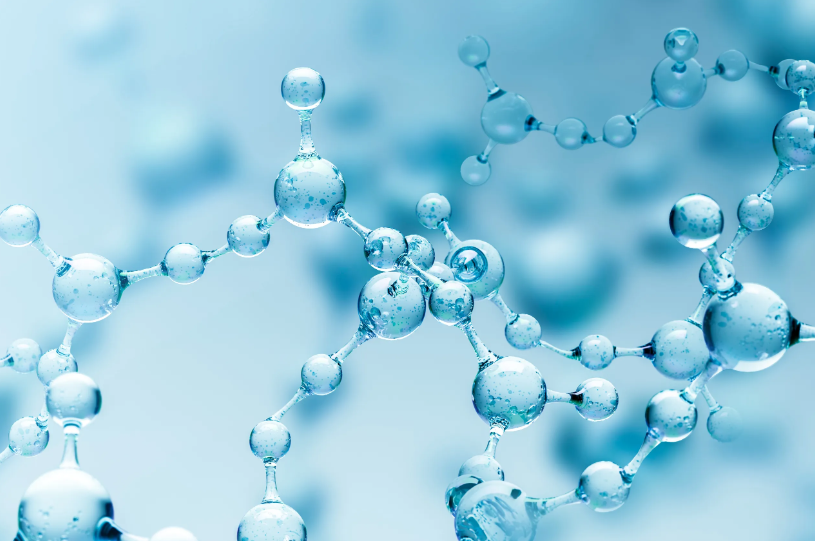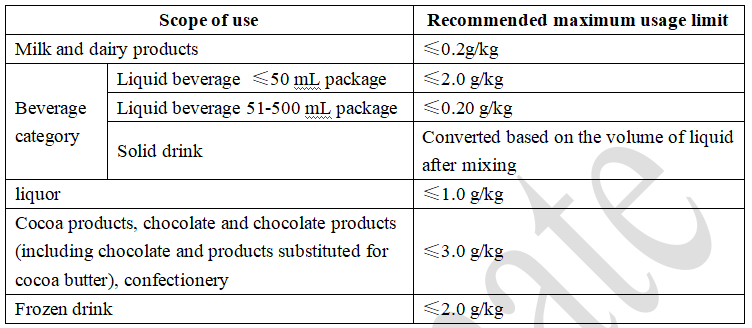
Speaking of hyaluronic acid, everyone should be familiar with it, as its moisturizing and moisturizing effect in cosmetics is well-known to most beauty lovers. But hyaluronic acid has far more than just this important identity. It can not only be used in medical, beauty, clothing and other fields, but also be used as a new food ingredient in food. Below, Foodmate will take you to learn about "hyaluronic acid" in food.
1. Approach hyaluronic acid, understand hyaluronic acid
What we usually call as hyaluronic acid, is actually a substance known as sodium hyaluronate, in many circumstances it is also called "hyaluronic acid". It is based on glucose, yeast powder, peptone and so on as the medium, from Streptococcus equi epizoosis subspecies by fermentation production, is made of D-glucuronic acid and n-acetyl-D-glucosamine disaccharide unit of sodium salt, and is a straight chain macromolecular polysaccharide. Hyaluronic acid also has the effects of lubrication, promoting fracture healing, antioxidant and so on.
2. Liberalization of the policy of "hyaluronic acid" intake
In 2008, the former Ministry of Health issued the "Announcement on the approval of Lactobacillus acidophilus and other 7 new resource foods" approving sodium hyaluronate as a new resource food. Use only for health food.
In the following years, the National Health Commission made a comprehensive assessment of the safety of sodium hyaluronate in accordance with the relevant requirements of the “Food Safety Law” and the “Safety Review and Management Measures for New Food Raw Materials”. In early 2021, the “Announcement on 15 Kinds of ‘Three New Foods’ including Cicada Flower Fruiting Bodies (Artificially cultivated)” (hereinafter referred to as "Announcement") officially approved the expansion of the use of sodium hyaluronate to some common foods. The categories of applied foods and the recommended maximum usage are shown in Table 1.
Table 1 Application of sodium hyaluronate in food categories and recommended maximum usage

Since then, a series of hyaluronic acid food has been published, some enterprises hype their own hyaluronic acid food in the name of hyaluronic acid can beauty skin care banner. However, according to the relevant laws and regulations of the state, the labels and instructions of ordinary food can not claim to have health care function, nor can they express or imply the health care function by promoting some ingredients. "Announcement" also clearly stipulates that the safety data of intaking sodium hyaluronate (hyaluronic acid) among infants, pregnant and lactating women groups is insufficient, from the principle of risk prevention, it is inedible to the above groups, hence labels and instructions should be marked with inappropriate groups, and the recommended consumption of 200 mg/day or less.
3. Hyaluronic acid food standards may continue to improve
After sodium hyaluronate was applied in health food as the new resource food, the industry standard "Sodium hyaluronate" (QB/T 4576-2013) was formulated in our country to keep the healthy and stable development of industry. However, with the further expansion of sodium hyaluronate market scale and food application field, China plans to revise the industry standard of Sodium hyaluronate and issue a revised draft for comment in 2022.
In addition to industry standards, there are some group standards and enterprise standards in promoting the "hyaluronic acid" food market to the direction of regulation. For example, “General Requirements for Sodium hyaluronate for Food (T/CNFIA 157-2022)”, “Sodium Hyaluronate Drinks” (T/CNFIA 155-2022) and “Sodium Hyaluronate for Food Use” (T/SNHFA) 011-2021) and other group standards as well as hyaluronic acid food-related enterprise standards released by enterprises around the country are promoting the standardized development of the market
4. The development trend of hyaluronic acid food
In recent years, the rapid development of hyaluronic acid food can benefit from oral "hyaluronic acid" on the skin, eyes, joints and other protective effect. Like other functional foods, the "efficacy" of hyaluronic acid food is an important factor for consumers to consider when choosing. With the overall improvement of the national economic level, consumers' health awareness is also improving. Driven by the idea of "health tide", more and more consumers begin to favor hyaluronic acid food with the effects of maintaining skin health, repairing joint damage and regulating intestinal immunity.
In fact, the development of hyaluronic acid food in foreign countries started earlier, the industry has developed mature, containing hyaluronic acid food has been very popular. In recent years, Japan and the United States and other countries of hyaluronic acid food occupy a dominant position in the global market. In Japan, for example, sodium hyaluronate was introduced in the late 1980s. Food and drinks containing hyaluronic acid can be found in convenience stores on the streets of Japan. In addition, countries for hyaluronic acid food main effect is also different. At present, hyaluronic acid food in the market in Japan mainly includes functional food (health food) and ordinary food. Health food is mainly used to supplement water, enhance skin elasticity and weight loss products. In the U.S. market, hyaluronic acid products are marketed as dietary supplements to improve skin and joint health.
Compared with foreign countries, the development of Chinese hyaluronic acid food industry is relatively late, but in recent years with the legalization of Chinese hyaluronic acid food, the use of hyaluronic acid in the field of food has achieved a greater expansion, the market coverage is also expanding. Some enterprises have launched drinking water, soft candy and other hyaluronic acid food. However, since sodium hyaluronate has entered the food field for a short period of time, relevant experimental studies have not confirmed its function, and the effect of oral hyaluronic acid has yet to be verified. The vast majority of consumers remain in wait-and-see mode. In the future, the major production and sales enterprises need to come up with more precise evidence or basis, so that more consumers are willing to pay for the "health" effect. Whether hyaluronic acid food can become a new password of health, let us wait and see together!